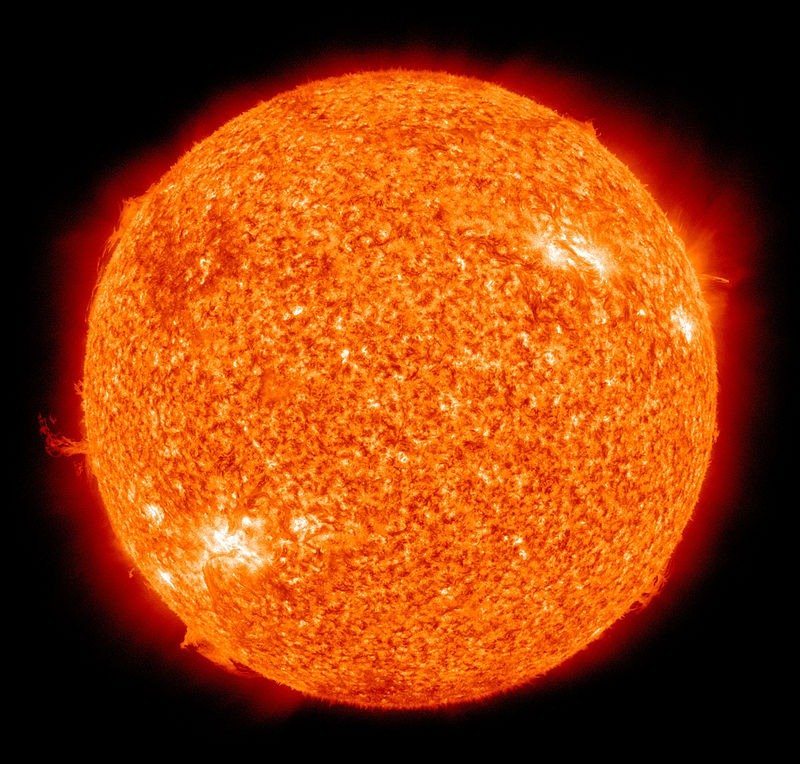Image credit: NASA/ SDO
Every time we learn about the upcoming launch of another research satellite, we cannot help feeling excited. Especially when the robotic explorer is going to study the most important of all stars, the Sun, like the Solar Orbiter that is scheduled to lift-off on February 8th.
The Solar Orbiter is a very ambitious project of the European Space Agency (ESA) with an active participation of NASA. It will become the second closest spacecraft to the Sun after the NASA Parker Solar Probe that was launched in 2018. The two spacecrafts are very different, but have complementary missions. Once the Orbiter is launched the probes will synchronize and join forces to provide scientists with the most detailed data on the Sun’s atmosphere, magnetic field and solar wind.
Why Sun?
The Sun is the source of life on Earth. The light and heat it provides is crucial for the survival of all species on our planet. The Sun changes and evolves all the time. It’s activity has an impact on out technology, climate and health. Therefore, to understand the processes inside the Sun means to be able to predict the star’s behavior in the future and, most importantly, how this behavior will affect us Earthlings.
Another reason to study the Sun is to better understand all stars and how they “work”. The Sun is a typical star, and the closest one to us. At the moment it is the only star within the reach of our probes. So the better we understand the Sun, the more we know about other stars. And our Galaxy. And, ultimately, all galaxies!
Get ready- Set- Launch
ESA Solar Orbiter will be launched from Cape Canaveral Air Force Station (Florida) aboard a United Launch Alliance Atlas 5 rocket. The take-off is scheduled for the early hours of February the 8th (GMT). The launch window will remain open only for the following two and a half weeks. So let’s keep our fingers crossed for good weather!
The pre-launch preparations are going well. The spacecraft arrived to Florida in November. Last week, on January 24th, the engineers completed the “wet” (meaning with a liquid propellant loaded) countdown dress rehearsal of the take-off procedures. Looks like everything is ready for the big day…
After the launch the Orbiter will separate from the mother-ship and begin its journey towards…(no, not the Sun)… planet Venus. The spacecraft will perform a flyby of Venus, return to the Earth and then fly past Venus once more before reaching its operational orbit. If all goes well, the first close encounter with the Sun will occur in 2022.
ESA Solar Orbiter vs NASA Parker Solar Probe
The Solar Orbiter is a bigger satellite than the Parker Probe. It has more science instruments on board, but it will never approach the Sun as close as the Parker Probe. While “close is good” for some measurements, it makes others absolutely impossible. For instance, the Parker Probe cannot “look at” and take pictures of the Sun. It is simply too close to do that. The Solar Orbiter, on the other hand, will be able to snap some great shots of our neighbour star. The ESA spacecraft will carry 6 imagers that will provide us with the fantastic detailed pictures of the Sun on every possible wavelength. Thanks to the Orbiter’s highly inclined orbit we will not only be able to take the first photos of the Sun’s polar regions, but also find out how the solar wind changes over solar latitude. The Sun’s poles are home to the permanent Coronal holes, the sources of very fast solar wind. Of course, scientists cannot wait to see what’s going on in those regions!
| NASA Parker Probe | ESA Solar Orbiter | |
| Program | Flagship (aka large strategic mission) | “Cosmic Vision” program, Medium class |
| Launch Mass | 1 510 lbs | 3 968 lbs |
| Distance to the Sun | 10 solar radii | 60 solar radii |
| Orbital period | 88 days | 5 months |
| Orbital plane | Ecliptic (same as the planets) | High latitudes flybys (up to 25 degrees above the ecliptic plane) |
| Mission duration | 7 years | 6 years 11 months |
| Focus on | Solar corona | Inner Heliosphere |
| Instruments (in citu measurements) | 4 | 4 (operate continuously) |
| Instruments (remote measurements) | 0 | 6 (operate 30 days per orbit) |
It’s a teamwork!
In order to get better results, the two spacecrafts will be able to work as a team. For example, when they align, the probes will measure the same events at two different distances from the Sun. That will give astronomers an idea of how the weather changes with the distance and make predictions on its impact on the Earth and near-Earth environment.
Good luck and godspeed, Solar Orbiter!
To learn more about the wonders of the Universe visit one of our portable star dome space shows and read our popular Astronomy blog.


